#Yakut Horse
Text
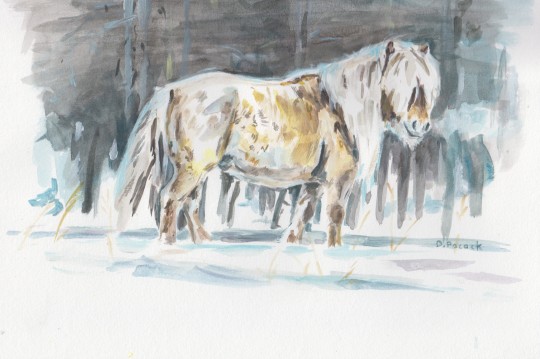
Study of a Yakutian horse in the snow
Acrylic paint on paper
#art#artist#artists on tumblr#animal art#horse#horses#equineart#horseart#acyrlicpainting#acrylicpainting#acrylic painting#acrylic#yakutian horse#yakut horses#yakut horse#horse breeds
154 notes
·
View notes
Text
25 Most Beautiful Horses on Planet Earth
Watch video of ”25 Most Beautiful Horses on Planet Earth” video by @4EverGreenYT
TAG:
Friesian,
Marwari Horse,
Arabian Horse,
Fjord Horse,
Appaloosa,
Brumby,
The Oldenburg,
Shetland Pony,
Falabella,
Yakut Horse,
Spanish Norman,
Katria
Watch video below…
25 Most Beautiful Horses on Planet Earth
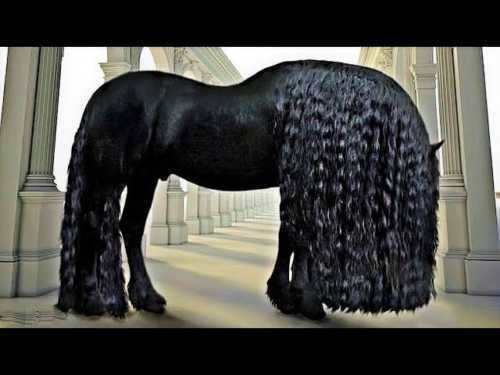
View On WordPress
#Appaloosa#Arabian Horse#Brumby#Falabella#Fjord Horse#Friesian#Katria#Marwari Horse#Shetland Pony#Spanish Norman#The Oldenburg#Yakut Horse
5 notes
·
View notes
Photo
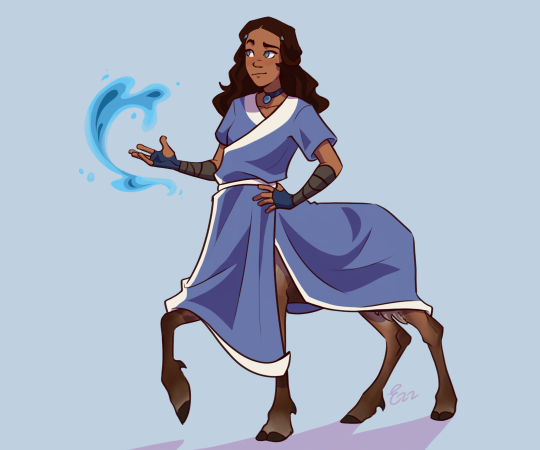
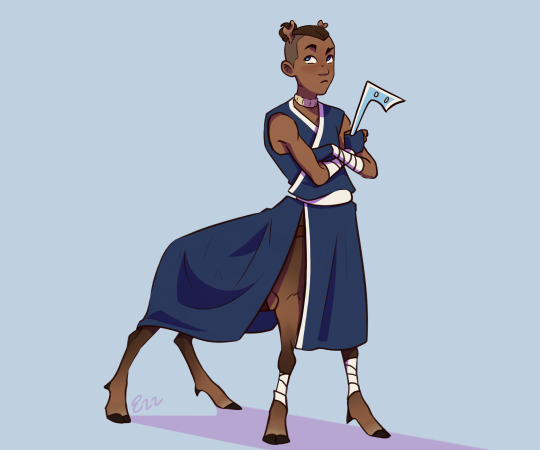
Dynamic duo (she’s about to throw that water at him)
Part 1
Part 3
Part 4
#avatar the last airbender#atla#sokka and katara#sokka#katara#atla fanart#centaur au#fun fact: originally they were gonna be yakut horses#but then i had an epiphany#and now they're caribou#sokka's very proud of his tiny baby antlers#nobody tell him that next spring Katara's gonna start growing hers and they're gonna be bigger
1K notes
·
View notes
Text
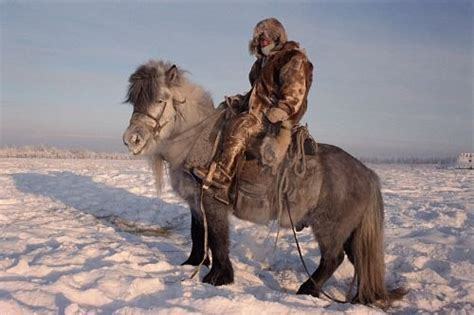
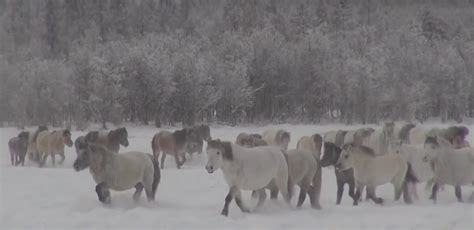
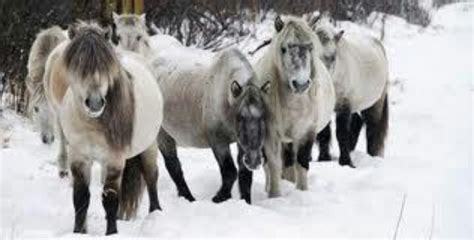
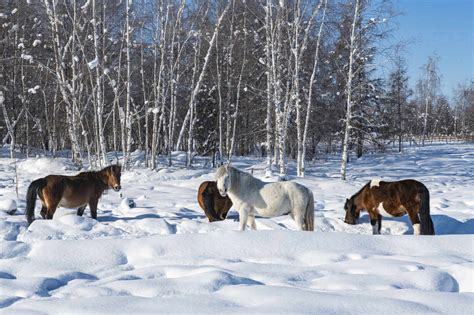

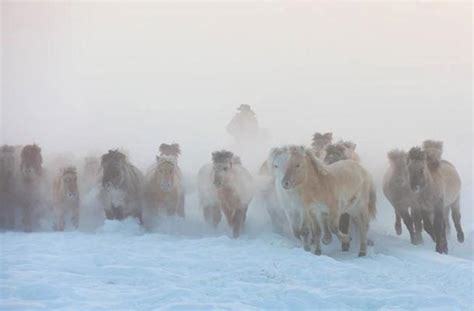

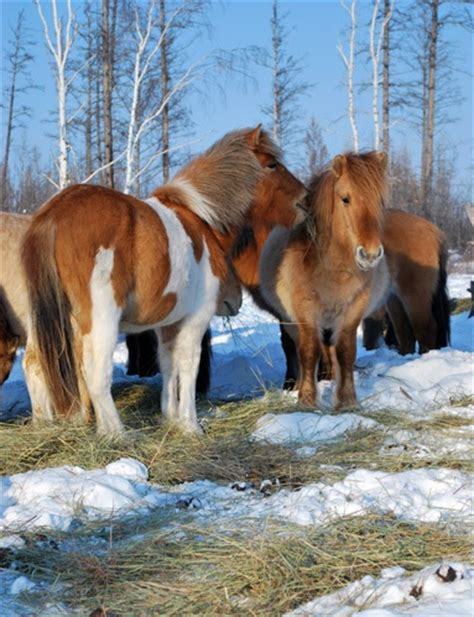
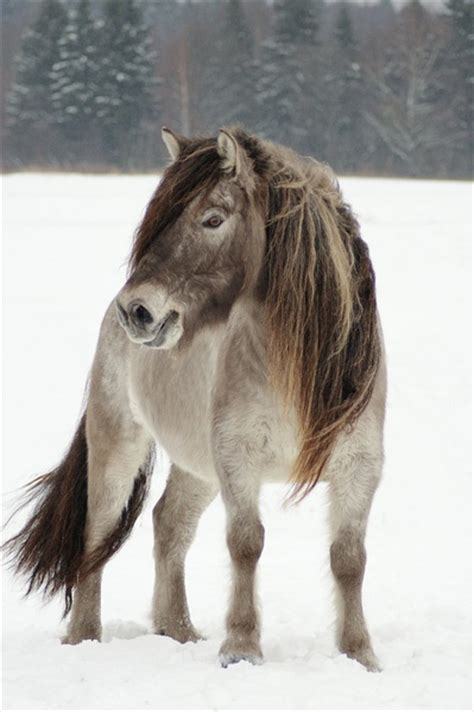
24 notes
·
View notes
Text




i swear if had a super fluffy yakut horse i wouldnt be suffering thru anxiety attacks
15 notes
·
View notes
Text
Likewise, the Sakha (Yakut) people always donate one mare from their large herds of domesticated Horses to a shaman.
"Biological Exuberance: Animal Homosexuality and Natural Diversity" - Bruce Bagemihl
#book quote#biological exuberance#bruce bagemihl#nonfiction#sakha#yakut#donation#mare#horse#equus ferus caballus#shaman
2 notes
·
View notes
Text

Stella at the entrance to the Yakut ASSR from the Magadan region. Made in the form of a ritual hitching post - serge. Serge means that the area where it is installed has an owner. According to tradition, it is done at the yurt, at the gate of the house (“as long as serge stands, the family is alive”), in places where shamanic rituals and burials are held. Hosts and guests tied their horses to it, and it is also a symbol of the tree of life - a certain pagan concept that has survived to this day. You cannot destroy serge - it must itself become unusable.
60 notes
·
View notes
Text
we’re doing pathologic musicology again. everybody shut up. i’m sick of writing about bel canto musical traditions and my jstor subscription dies tomorrow i think. so i’m pre-emptively saving pdfs about ethnomusicology.
interesting side effect of the town’s culture being mostly built around cattle rather than horses is that the soundtrack of p2 in particular has essentially ended up creating an entire musical history and lexicon that is identifiably SIMILAR to that of The Area Near The Baikal Rift Valley while being obviously different.
classic’s soundtrack interestingly arrives at a similar point to this with completely different means in that the classic soundtrack is basically just. ‘is it bleeping and blooping? ok sick ship it’, while also borrowing at points quite clearly from the actual musical traditions of the region. which produces the effect in the listener of, basically ‘this should sound... other than how it does? but it makes sense?’
p2′s soundtrack is trying more obviously to do Authenticity in a way that. has historical precedent, certainly (hi borodin). but it is also trying to do that by borrowing from musical traditions that don’t completely mesh with the way that the town’s musical traditions would have developed. because the town-on-gorkhon is very fond of bulls, culturally speaking, and not horses.
a lot of the extant classical music from the area where pathologic is (presumably) set is not only literally About Horses, which are culturally important, but musically refer to the various gaits of The Horse. (this example is in tuvan but it is not only about horses but the 2/4 rhythm is Trotting-Like. buryat music uses similar music and the same scale, and many of the same instruments, as tuvan music.)
this is not something that bulls particularly have, and so while bulls occupy an equivalent cultural position in the town-on-gorkhon this obviously necessitates a completely different musical tradition. which is also one that doesn’t really exist in the real world, but for which vasily kashnikov and theodor bastard have pulled from existing traditions. they have, however, also created an entire musical language that feels like a place’s musical language essentially out of whole-cloth.
the way that they have done this is essentially to take something about the culturally important animal (lowing, for the bulls -- similarly to how actual tuvan, mongolian, baikal, and yakut music refers to horses’ gaits). and then to use that as a basis for the musical ‘world’ of the game, in a similar way to how extant music uses horses. it’s most obviously used in ‘song to boddho’ but a lot of the music in p2 makes a lot of use of drone which could quite easily be interpreted as The Sound That The Local Culturally Important Beast Makes.
(also the p2 soundtrack has a passacaglia in it. this isn’t relevant to this conversation in any way but it’s neat.)
226 notes
·
View notes
Text
My bone to pick with shitty hetalia "Siberia" OCs
Spoiler alert, they're all terrible!
Many people who make Siberia ocs often refer to Siberia as a nation. Siberia is not a nation, it is a large geographical area which is the home to many different ethnic groups.
This excuse is often made for singular "native American" ocs too; Using the excuse that because of the Russian conquest of Siberia which resulted in the massacre and displacement of the different peoples of Siberia, this is a justification to put all of these different groups into one, singular, Siberia OC, as apparently, there's no point in doing actual research into the different ethnic groups who are native to Siberia!
This I find to be blatantly disrespectful, conflating such diverse groups into one (often whitewashed as I'll get onto later) singular OC and flippantly saying "oh well a lot of them are dead now so..." is again, disrespectful and insensitive. A Tuvan is not an Evenk is not a Yakut is not a Buryat is not a Chukchi is not a Koryak.
That list I just gave you is just a small example of the sheer diversity of the ethnic groups who are native to Siberia.
It leaves a very bad taste in my mouth when people use the Russian conquest of Siberia - an already sensitive topic because of the displacements and killings of the native people of Siberia which in turn, resulted in an ethnic cleansing, as a vehicle to then create (as I said before, often whitewashed) OCs which dismiss the unique cultures and histories of these different groups. Do people...Not see the irony in this?
Honestly, just 5 minutes of research into the native groups of Siberia would show you that trying to conflate all of these different cultures into one just does not make sense regardless. Though these cultures share similarities because of course they are North East Asian - this is not a justification to waive off the diversity of these ethnic groups!
Let's take Buryats and Yakuts for example, two ethnic groups who live in Siberia and who are considered to be Siberians. Buryats are a Mongolic people, their culture is quite similar to that of Khalkha Mongols, the majority ethnic group in Mongolia. Yakuts on the other hand, are not a Mongolic group.
The Buryats live primarily in the Republic of Buryatia, located in southern Siberia, Russia, while the Yakuts, also known as the Sakha, inhabit the Sakha Republic (Yakutia) in the Russian Far East. Both groups have historically practised nomadic herding, but the Buryats traditionally focused on cattle herding and moved with their herds across the vast steppe, while the Yakuts were known for their reindeer herding and horse breeding in the Arctic and subarctic regions. The Buryats' culture has been heavily influenced by Tibetan Buddhism due to historical connections with Tibet, and shamanism also plays a significant role in their spiritual practices. The Yakuts' culture, in contrast, reflects influences from both Turkic and Siberian indigenous elements, with some Russian cultural assimilation over time.
Geographically speaking, they also differ. Buryatia is characterised by diverse landscapes, including mountains and lakes, while Yakutia is known for its extreme cold temperatures and vast tundra. Despite their differences, both groups have rich cultural heritages and face challenges in preserving their traditions and languages amidst Russian colonisation.
Just between Buryats and Yakuts, you can already see how they differ culturally and linguistically. Of course there will be some similarities as they are both Northern Asian cultures, but we don't give Spain and Portugal a singular personification because of similar characteristics/cultures now, do we?
Another issue I have with Siberia OCs is when, not only (by default) is a Siberia OC blatantly dismissive of the diversity of the ethnic groups who are native to Siberia, but when they make their already insensitive OC... White Russian, or half Russian? Do I even need to explain why this is offensive?
Yes, a majority of people who live in Siberia now are ethnic Russias. Do you ever... wonder why that is though?
What's worse is when people know, but then use the displacement of the people of Siberia as a justification to make their Siberia OC half Russian or white. This is blatant white washing, and though many groups are Russified, this does not mean that they've completely let go of their native culture and or are extinct, nor is it an excuse to ignore their native cultures to make an insensitive oc.
There is a difference in recognising that yes, some of these groups have gone through a process of Russification/have adopted many aspects Russian culture (to varying degrees depending on the group) , and straight up white washing their cultures by making a half white-Russian or a white Siberia OC - as if each of their unique identities do not deserve the agency to be represented by an equally unique and accurate personification.
Groups in Siberia never had strong relations with ethnic Russians until the Russian conquest of Siberia. It's okay to have an oc of a Siberian ethnic group which reflects the degree of Russification that that group underwent because (unfortunately) it's true for many of them - Kazakhstan for example is a central Asian country that underwent a process of Russification and it's accurate to reflect the degree to which Kazakhstan was Russified and how this affected him in his personification. Despite it being an unfortunate fact, you can't escape it, and I am not against reflecting this.
But it's a whole different ball game when you take already marginalised groups of people, squeeze their diverse cultures into a clusterfuck of an oc, which is already bad in and of itself… but then WHITEWASH THIS OC. EVEN WORSE WHEN THEIR CULTURES WERE ACTIVELY PERSECUTED BY THE RUSSIAN STATE, AND ARE STILL BEING PERSECUTED.
Further, the idea of making the Siberia OC "young" (even an oc of a singular Siberian ethnic group) as in, born during the Russian conquest era… and make Russia some sort of father to Siberia… This just absolutely reeks of paternalistic colonialist propaganda; the idea that these groups had no culture, no right to govern themselves or the idea that they didn't have the ability to govern themselves before the Russians came and subsequently "gave them culture" and "enlightened them" in their ways.
What other actual justification is there to do something like this? Seriously? When these cultures are actually quite old and predate the Russian conquest?
As a Filipino who has to deal with this sort of trash from Spaniards, it is not appreciated.
Further, if it wouldn't make sense to make a native American group OC half white because of white settlers in America, and if it wouldn't make sense to make the Philippines half Spanish because of our colonisation under the Spanish, why then is it ok to do it to the native people of Siberia?
This is the WORST part about Siberia ocs. But people who make their Siberia ocs the representation of 2p (or BOO! EVIL!) Russia.
This is so egregiously racist and I don't even know how people can headcanon this without even batting an eye.
First of all, making Siberia the "evil Asian" side of Russia… okay I've bloody banged on about this before but I really don't care at this point. This is stepping into peddling eugenicist racial science about Russian.
The rhetoric that Russians (but this also applies to other eastern Europeans, however I'm specifically talking about Russia here seeing as it's about Siberia ocs) are not "true Europeans" because of Asiatic influence, both from the past (Mongol invasions) and present (Russian Asians who are the result of the Russian conquest of Siberia and central Asia). And because of this, this means that Russians are also a load of evil, Eastern Hordes too because of their so called "Asiatic" heritage.
There's a saying in some Eastern European countries about Russians. It goes something along the lines of "Scratch a Russian, you'll find a Tatar." This is used in an offensive manner to basically call Russians subhuman or evil because of their so-called "tatar" (Asian) heritage.
Keeping this in mind… Making Siberia… the "evil Asian side" of Russia… yeah I'm not beating around the bush with this one. You're a filthy racist if you do this.
It's even more egregious when you're using Siberians as a justification to make your cheap 2p Russia OC evil, as if SIBERIANS are the aggressors towards Russians. WHEN THEY WERE THE ONES WHO ARE COLONISED BY RUSSIA AND TO THIS DAY FACE MARGINALISATION UNDER THE RUSSIAN STATE. BUT NO. THEY'RE THE BIG EVIL AGGRESSORS TOWARDS YOUR INNOCENT WHITE BLORBO, RIGHT?
tl;dr If you have a singular "Siberia" oc it's trash no matter what, hope this helps 👍
#hetalia#hetalia world stars#hetalia world series#hetalia world twinkle#hetalia discourse#Hetalia racism#Hetalia Russia#Aph Russia#Hws Russia#ivan braginsky#Aph Siberia#Hws Siberia#Hetalia Siberia#Siberia oc#2p Russia#2p!Russia#2p hetalia#2p!hetalia#Not aimed at any of my followers btw ik there are some people who used to have Siberia ocs but realised it was offensive#Dw it's aimed at people who continue to do this despite knowing otherwise
79 notes
·
View notes
Text

Now I have a pony sona.
I was inspired by Yakut horses (they very small and fluffy) So yeah, she very fluffy and cubby :3
23 notes
·
View notes
Text
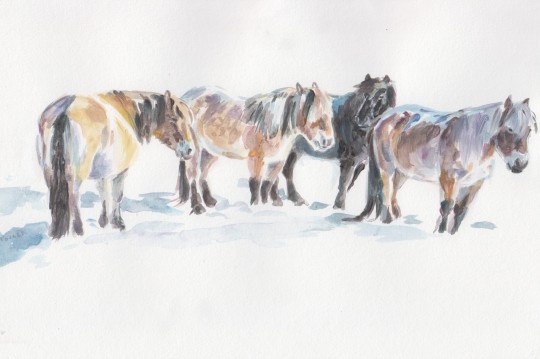
Yakutian horses in the snow
Acrylic paint on paper
#art#artist#artists on tumblr#animal art#horse#horses#equineart#horseart#acyrlicpainting#acrylicpainting#acrylic painting#acrylic#yakutian horse#yakut horses#yakut horse#snow#winter#horse breeds
108 notes
·
View notes
Text
small bits of info on Turkic deities
Some of these I cant find tons of information on. So im going to compile them all here, I hope this information is useful to some people

Burkut -
She is a knowledgeable, elderly woman who lives in a cave atop a massive mountain someplace at the end of the earth. She rides the winds, causing storms and whirlwinds.
Szelanya also has a Slavic counterpart, a nymph with wind power who enjoys generating storms. She lives near hills, mountains, and tall mounds.
In Hungarian and Turkic folklore, she is also described as a feminine fairy-like spirit that dwells in the forest and occasionally in the skies.
Yel ana-
In Turkic mythology, the Yel İye are feminine fairy-like spirits that reside in the forest and occasionally in the skies. They were thought to be the spirits of women who had been frivolous in their lives and were now suspended between the physical world and the afterlife. They are frequently shown as lovely maidens, either nude or clad in shimmering gorgeous white costumes and extraordinary spectacular gowns.
According to legend, removing even one of Yel İyesi's hairs causes her to die or revert to her original form. A human can seize control of a Yel İyesi by taking a portion of her hair. If the hair is burned, the Yel İyesi disappears.
The Yel İye's magnificent voices create powerful winds that may carry houses into the air. Despite their feminine appearance, the Yel İye are ferocious warriors. The ground is reported to quake when they fight. They possess healing and prophetic abilities and are occasionally ready to assist humans.
Yel Ana, also known as Cel Ene, is the Turkic and Altai goddess of the wind. Also known as the Goddess of Guidance. She is the female version of Yel Iyesi. The name Yel Ene translates to 'Wind Mother. Szel Anya is known as the "queen of wind" in Hungarian mythology.[1] She's a clever woman. Szélanya (Wind Mother), an ancient woman, controls the wind.
Aisyt-
Ajyyhyt (Aysyt, Ajsyt, or Ajyhyt; Yakut: Айыыһыт) is a deity of the Yakut people from the Lena River area of Siberia. The name means "birthgiver," and she is sometimes referred to as the "mother of cradles."[1] Her full name is Айыыһыт Хотyн, which means "birth-giving nourishing mother".[Citation required] At each baby's birth, Aisyt brings the soul from heaven and registers it in the Golden Book of Fate. She is the daughter of Yer Tanrı.
Ajysyt was in charge of guiding a newborn child's soul to birth and was present at every birth. Women would channel Ajysyt, believing that it would reduce their agony during childbirth.[1] She maintained a gold journal where she chronicled each one. She is claimed to have lived on a mountaintop in a seven-story house,[1] from which she ruled the globe.
Yakut venerate a kind of ajyy (Yakut: Айыы). The principal manifestation, "Njelbey Ajyhyt," is responsible for childbirth. Djøhøgøj Tojon is responsible for horse reproduction, Ihegej Iejehsit for oxen, and Noruluya for dogs and foxes.
When referring to the deity responsible for the birth of male animals such as stallions or bulls, the term ajysyt is interpreted to mean masculine. However, when referring to the birth of a mare or cow, the term is feminine.
Su iyesi-
Su Iyesi (Tatar: Сy Иясе or Su İyäse; Chuvash: Шыв Ийҗ; Sakha: Уу Иччи; meaning "water master") is a water spirit in Turkic mythology. It is equivalent to the nymph in Turkic civilizations. The entity is disembodied and intangible, yet it may transform into a female being and become Yer Tanrı's daughter. Sometimes the master of water is represented as a bull.
When angry, it destroys dams, sweeps away water mills, and drowns humans and animals. It takes individuals down to her undersea home to serve her as slaves. In Tatar folk stories, this figure is also known as the Su Anası ("water mother"). In Turkic folklore, it dwells in ponds or rivers. There is no mention of a specific house, and the 'half-sunken log' is not visible. To go about, it rides a log.
Su Iyesi is sometimes linked to dangerous events like floods, storms, shipwrecks, and drownings. In some Turkic folk beliefs, she might be kind or beneficial while simultaneously causing rain.
It is thought that some potent Su Iyes, such as Su Dedesi, might induce illness. Water Disease, which he supposedly produced, manifests as watery bubbles in the human body. To get rid of salt, throw it into a river or fountain.
Su Ana ("water mother") is frequently referenced as the feminine equivalent of Su Iyesi. She is described as a nude young woman with a fairy-like face and yellow and long hair, which is generally coated in black fish scales. She has a fish tail and eyes that glow like fire. She generally rides around her river on a partially submerged log, generating loud splashes. Su Anası are believed to be responsible for local drowning incidents. She is the wife of Su Ata. She enjoys beaches and getting out of the water.
Od iyesi-
Od iyesi (Tatar: Ут Иясе or Ut İyäse; Chuvash: Вут Ийҗ; Sakha: Уoт Иччи) is the Turkic and Mongolian spirit or deity of fire. In Turkic languages, Od (or Ot) denotes fire, while Iye is the familiar spirit of any natural asset, literally meaning "master" or "possessor." Od iyesi shields the fire.
Od Ana is the Turkish and Mongolian goddess of fire. She is also known as the goddess of marriage. She is the feminine version of Od iyesi. The Altay name Ot Ene translates as "fire mother" (od "fire"; ene "mother"). In Mongolian tradition, she is known as the "Queen of Fire." She was claimed to have been born at the beginning of the world, when the earth and heaven divided, as the daughter of Yer Tanrı.
Some compare her to Umai, the mother deity of Turkic Siberians, who is shown with sixty golden tresses like sun rays. Umai is supposed to have been the same as Ot of the Mongols.
Tengri, the main deity, causes three flames to burn in the human spirit, which Od Ana hides and extinguishes on Earth. Today, Turkish people refer to this as "cemre," the fire that descends on Air, Earth, and Water each year.
Od Ata is the Mongolian and Turkic/Altai deity of fire. He is the male version of Od Iyesi. Od Ede translates to 'Fire Father' in the Altay language. He is known as the Od Khan, or "king of fire" in Mongolian tradition. Od Khan (or Odqan) is a fire spirit associated with Mongolian shamanism. He is typically characterised as a red-colored person riding a brown goat. His feminine counterpart is Yalun Eke (Yalın Eke), the 'fire mother' and Kayra's son.
Yer tanri-
Yer Tanrı is an Earth deity in Turkish and Altaic folk belief and mythology, also known as Yertengri or Certenger. It can signify wickedness, humanity, and sensual shapes. It remains in the backdrop, adjacent to the Gök Tengri. It is not often shown in human form. However, it is frequently viewed as a feminine entity. The Earth or World is referred to as "Yertinç / Yerdinç".
Tengri is offered a white chicken as a sacrifice. Sometimes fish, lambs, and oxen are sacrificed. Specifically, his head is buried in the earth. In some stories, weak and fragile children are buried by their parents, where they become stronger and emerge as heroic three days later.
Infertile ladies pray to Mother Earth beside a sacred tree. In fairy tales, Mother Earth breastfeeds the heroes once from her right breast and twice from her left breast, giving the heroic enormous power.
In Yakut heroic epics, the brave individuals who would be invincible in the future are fragile and helpless as children. Even their parents are unwilling to accept them. After being nourished by the Earth God (Yer Tanrı), these youngsters transform into legendary heroes after being buried in the dirt. This is still the meaning of shaking mad persons into wells in several Anatolian regions.
It is stated that there are no images of the earth deity. They sometimes refer to her as a white-haired woman who lives in the trunk of a great beech tree. The branches of this tree rise up to the sky, which is owned by the spirit who gives people the most beautiful horses as presents.
Yereh Khan is the family god of Turkish and Altaic mythology. The earth is an entity related to the notion of God. Protects the family and house. Because he like onions, a sacrificial vaccination is left for him with the onions. The term shares the same origin as the verb to settle. In Mongolian, yeröh means "wish." It lives in baskets made of tree bark that are placed behind doors.
The baskets built for him are also known as Yereh. Yereh Türkelli is the name given to these baskets that have been passed down seven generations. When young ladies marry, they take their baskets (guardian spirits) with them, and the notion of dowry is most likely founded on this tradition. He is prayed for to be healed of skin disorders. The term shares the same origin as the verb to settle. In Mongolian, yeröh means "wish."
Etugen eke-
Etügen Eke ("Mother Earth"), also known as Itügen or Etügen Ekhe, is an earth deity in Tengrism. She was said to be permanently virginal. "Etugen" refers to a lady and Kayra's daughter. Her name might be derived from Ötüken, an ancient Turkish goddess of fertility and the sacred mountain of the earth Etugen is occasionally paired with a male counterpart named Natigai or Nachigai (Natikai, Natıkay), however this is most likely a mistake due to Etugen's mispronunciation. In legend, Etugen is commonly shown as a young woman riding a grey bull.
Etugen existed in the centre of the universe. The Turkic people saw Etugen as a voluptuous, attractive woman who served as the patroness of the homeland and nature. All living things were subservient to her. As a result, the Turkic people regarded Etugen as the second highest divinity, behind Kök-Tengri. Tengri dominated the fate of individuals and nations, until natural forces gave way to Etugen. Etugen would occasionally punish people for their faults under Tengri's order.
But she was typically regarded as a beneficent Goddess. Every spring, offerings were performed to the goddess Etugen before the cattle-breeding season and agricultural sowing. Sacrifices were also carried out in the fall, once the harvest was over. During the Khaganate period,[8] sacrifices to Etugen were national in scope. They were carried out around rivers and lakeshores. A reddish horse was sacrificed in the name of livestock and crop fertility, as well as general well-being.
Kormos-
Kormos or Kormoz (Tuvan: кормоc; Turkish: Körmöz or Körmös) are Turkic mythological spirits, sometimes known as ghosts or devils. In Turkic languages, "kormos" implies "does not see" or "blind". The term can also denote "mentally ill".
Kormoses are wicked spirits from Turkic mythology that live in the underworld. Because a soul may transform into a Kormos after death, they are frequently linked to ancestor spirits. Other names for them include Alban, Chahik, Ozor, and others.
Ülgen commands the Angelic Kormoses, who assist and defend humanity. Erlik commands the demonic Kormoses [also known as "Sokor Körmös" (blind angels)], who frequently inhabit the underworld and attack humanity. The last Kormoses are neither good nor evil, and they walk the Earth in a sad state.
Souls transformed into Demonic Kormoses after death can escape the anguish and rise to Uçmag if the good in their core outweighs the evil.
They are all good and malevolent spirits. Körmös Khan is their chief.
Jaiyk-
Jaiyk, also known as Cayık or Jayık Khan, is the deity of rivers in Tengrism. He is a significant deity in traditional beliefs.
Jaiyk was originally referred to as Dayık in Altai mythology. He was initially the patron deity of humanity and the son of Kayra, but his religion eventually extended throughout Central Asian tribes. He was the god of rivers, water, and lake water.
Jaiyk is seen as a young guy holding a scourge in his hand. He lives at the confluence of seventeen rivers. Jaiyk possesses all of the power of water and can create storms on the water. If he becomes upset, he creates and causes floods on Earth. Jaiyk commands all of the rivers and lakes. He sends ghosts to every river. Every river or stream has an İye (protective spirit or divinity). The Tengrist conception of the deity appears to connect him with both the destructive and purifying properties of water.
According to old traditions and beliefs, water and rivers are sacred phenomena capable of purifying everything. People used to be required to respect the water in their homes and social settings. A protective spirit (familiar spirit) resides in the sea. If he is furious, he may be dangerous to people. Because of this rude behaviour, the water may go dry. As a result, Tengrist's literature and oral storytelling contain warning tales and stories of disrespect towards water. The Great Law of Genghis Khan (Yassa) prescribes severe punishments for anybody who pollutes water or rivers.
Alaz Kahn-
Alaz is the deity of fire in Turkish mythology. Also known as Alas-Batyr or Alaz Khan. He is a significant divinity in folk beliefs and the son of Kayra.
Alaz Khan is represented as an elderly guy holding a torch in his hand. He resides in Ulugh Od (Turkish: Uluğ Od, "Great Fire"). His garment is formed of flames, and Alaz Khan possesses the power of fire. When Alaz Khan grows enraged, he starts and spreads flames on Earth. Alaz Khan commands all of the hearths and stoves. He distributes spirits to every hearth. Every fire or hearth has an İye, which is a protective spirit or divinity. The Turkic notion of the deity appears to relate him with both the destructive and purifying properties of fire.
According to old Turkic traditions and beliefs, fire is a sacred phenomena that may purify everything, including spirits and souls. People are obligated to respect the fire in their families and social settings. According to popular belief, a protective spirit (familiar spirit) resides within fire. If it was furious, it might cause harm to humanity. Because of this rude behaviour, the fire may be quenched. As a result, Tengrist traditional oral traditions portrayed horrifying stories of disrespect to fire. The Great Law of Genghis Khan (Dead Law) imposed severe punishments on anybody who showed contempt to fire.
Bai Baianai-
Bai Baianai (Old Turkic: 𐰉𐰀𐰖 𐰉𐰀𐰖𐰀𐰣𐰀𐰖) is the Yakut spirit of forests, animals, and the patron of hunters. Hunters kindle fires and hope that their job will be fruitful and without incident. In certain traditions, she guards children. She is considered a lineage protector.
Baianai was the ancient Turkish goddess of animals, riches, and fertility. She was venerated over what is today known as Altai and Sakha. Her name translates as "rich, fertile, and wealthy". She was Kayra's daughter.
Baianai, a woods fairy or protective spirit, appears in Turkic-Altaic folklore and mythology. In Central Asia, she's known as Payna. There are three Baianas:
Bai Baianai, the Goddess of Hunting.
Tagh Baianai, the Goddess of Forests.
Ughu Baianai: Goddess of Fisheries
Baianai are frequently represented as ethereal maidens with long, flowing hair and, on occasion, wings. They are frequently clad in free-flowing dresses embellished with feathers that allow them to fly like birds. Baianai is typically depicted as a blonde, tall, slim woman with pale, bright complexion and blazing eyes. Baianais are thought to be extraordinarily attractive ladies with a strong affinity for fire. They have the ability to cause drought, burn a farmer's crops, or cause livestock to die from high fever. It is reported that when a Baianai becomes angry, she transforms into a monster bird capable of hurling fire at her foes.

sorry for the info dump! im gonna do my pantheon posts like this from now on if I cant find a ton of info online about them! - Especially the cultures im not apart of.
8 notes
·
View notes
Text
Sakha's birth
-----------------------------------------------------------------------------
Note: Yakuts are also called Sakha. I prefer to use Sakha, as that is the name they commonly use. When I say "Yakuts", I am still talking about the Sakha people.
Another note: I created this post to explain the origin of an OC of mine, who is the personification of the Sakha people and the Republic of Sakha as well (. If you dont like the concept but you are interested in Sakha people's history, this post could still interest you.
-----------------------------------------------------------------------------
Even though there were yakuts before, I think Sakha was born around 1500. Of course, she does not know the exact year she was born, so this year is only a reference for estimating her age.
The origin of the Sakha / Yakuts, is extremely complex and has many theories. It is said that Yakuts came from the Kurykans, but at the same time, some sources say that they came from the Kurumchi, Tumats, and also the Ymyyakhtakh could also be their ancestors or related to them. The exact origin of the Sakha is still unknown, but they probably originated after the assimilation of different tribes.
The name "Sakha" itself and the Sakha people find their roots in the Turkic-dominated eastern part of the Scythian Confederation, referred to as "Saka" in contemporary Persian sources. These tribes later became part of the Tiele Confederation, settling west of Lake Baikal as Kurykan Tieles, and they could have evolved to the Sakha that migrated to the Lena Basin. Also, some scholars suggest that the Sakha could have also lived east of the Aral Sea.
As you may imagine, the Sakha were almost everywhere. So why did they migrate towards the Lena Basin? They probably did that because some tribes rebelled against Genghis Khan, such as the Tumats (who could be the ancestors of the modern Tuvan people), so its possible that Yakuts rebelled against him too.
Their migration to the Lena Basin coincided with the displacement of other Siberian tribes, such as Evenki and Even. As they settled around the Lena River, the Sakhas interacted with the Kulun-Atakh culture, which might have been assimilated by the Sakha over time.
By the way, I think Kulun-Atakh could also have been a nation, but maybe it didnt live for that long.
The Sakha Nation, as known today, is believed to have finalized its formation in the 16th century. During the early years, two important figures shaped their identity as we know it today, according to the legend: Omogoi Baay and Elley Bootur.
Omogoi Baay moved with his family and settled first in the Chara river, and then he was the first to settle in the Tuymaada Valley (where modern Yakustk is located). Omogoi Baay became rich and became rich. According to his father’s behest, Elley Bootur, who arrived from the south and became an employee of Omogoi, married Omogoy Baay’s daughter.
Elley Bootur also forged yakut's identity, as he introduced innovations in horse breeding, improved housing, dishes, and organized the first Ysyakhs (which are their main event, its like their New Year) . After himself, he left a large offspring, who later became the founders of the Sakhas.
Around 1500s, the Yakuts were the main tribe around the Lena, and eventually, in 1540 aprox., the Khangalas Toyonate was founded, under Munnan Darkhan's rule. During this time, the Yakut people we know today completed their formation, and Sakha, the Nation herself, was born.
Sakha herself was found in the Chara River's shore, where Omogoy Baay settled at first. After she was found, people realized soon she was not a normal baby, the Toyon Usa (the Yakut King) was informed.
Despite her eyes being dark brown, they have a purple highlight that shows if the light hits the charoite inclusions in her eyes. This purple glow is an indicator of her immortal nature.
(Note: in the Chara River there are deposits of a rare mineral called Charoite, which is purple.)
After she was found, she was taken care of by the King's family, as her mission was to become a great diplomat and warrior who could represent her people in the future, and protect them if needed.
I will talk in another post about her childhood, but for now, here is a post where I included two videos that talk further about her history:
https://www.tumblr.com/meliissa-art/738531636317224960/history-of-sakhayakutia?source=share
#aph sakha#hetalia sakha#hetalia#hws sakha#sakha#siberia#aph siberia#hws siberia#hetalia siberia#yakutia#history#siberian history#indigenous russia#north asia history
8 notes
·
View notes
Text
some yasmine upbringing lore
he's born in dino valley in a community of yakut horses herders/breeders, which are mainly used for meat. (or a jorvik version of yakut horses idk). in jorvik horse meat is illegal/controversial but it's part of life in dino valley. he was raised around horses and grew up with them and taking care of them and he loves them. but he never saw any other horse breed besides this one. he especially always loved riding his horses, as fast as possible. ofc he had his 1 yakut horse he loved the most and loved riding.
youtube
youtube
one day he encounters in the forest a pure black russian-arabian horse. he hasn't seen a horse like this before. (not sure yet where the horse came from). he befriends it and is blown away by how athletic and fast it is. and when the horse finally lets him ride it, it's so incredibly fast and it's the best feeling in the world. he completely falls in love with this horse.
but something happens that eventually forces him to kill the horse. at first i thought that maybe theres a hunger and he needs to sacrifice the horse for his family to have food, but if they have many horses it doesnt rlly fit. so idk yet what happens but something that makes him kill the horse that ill think about eventually. its a big deal for him ofc, and he cant stop thinking about this horse. hes way more heartbroken than he wouldve liked to admit. and riding the yakut horses is not the same anymore. eventually he pushed his "childhood friend" yakut horse to the limit to try to match the russian arabian he lost, and it died.
so he makes a contract with a pandorian creature. in dino valley people are kind of aware to pandoria, not very clearly, they dont know the name of it but they just know there are those supernatural things that come from this supernatural world and they try to keep balance with it. they use pandoria energy for light beacons for example, just a little bit, and give back to pandoria and try to keep the harmony.
so yasmine wants to bring back to life the horse he lost. he wants to feel what he felt when riding it. the pandorian creature asks yasmine to eat him. so basically like in howl's moving castle: yasmine swallows the creature, and then his chest hurts and his heart comes out of his chest surrounded by pandoria pink light. he holds it and the heart becomes a horse embryo. so yasmine starts taking care of it. he doesnt have a heart now, his heart is inside the horse.
im not sure if he hides the horse away bc he knows ppl would be suspicious of it and feel the pandoria energy, or if he takes care of it with the rest of the horses.
he also notices it hurts him to be apart from his horse for too long or too far. its unbearable.
when the horse matures he runs into difficulties with it, the snow and ice are a problem to ride fast and he also doesnt know how to train horses for racing so he has to leave dino valley and go to jorvik to learn more about training and all those stuff. then to sustain and support himself he needs to find odd jobs, and starts working for GED. when miss drake finds out about him and the horse, she becomes interested in him.
46 notes
·
View notes
Text




choosing which jorvik pony to get on my alt (thank u 300sc) and this one got such cute face im crying
9 notes
·
View notes
